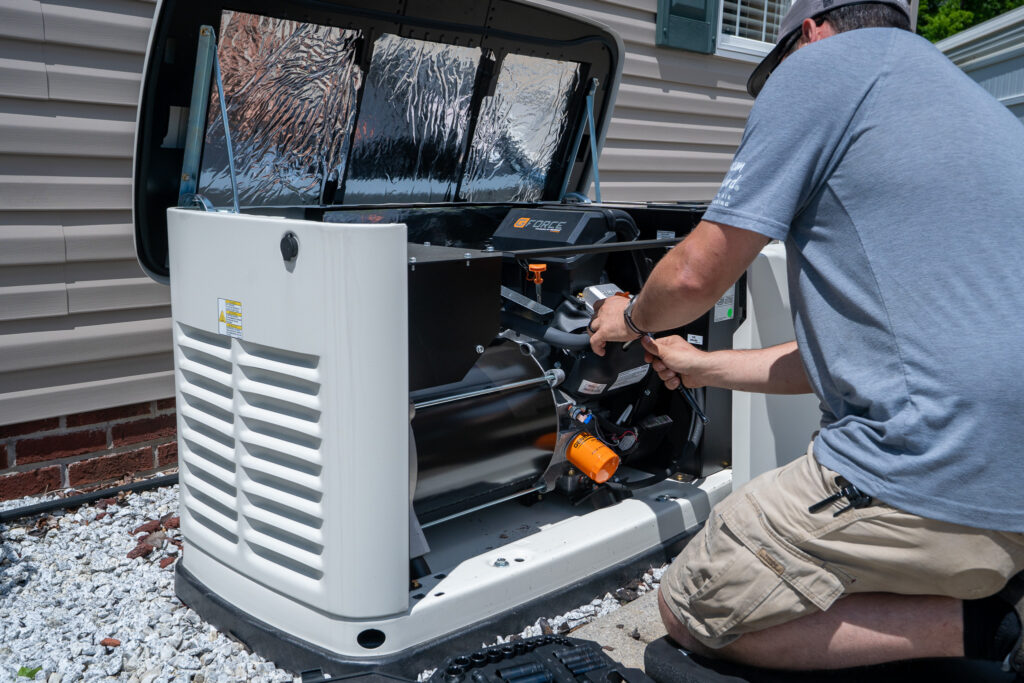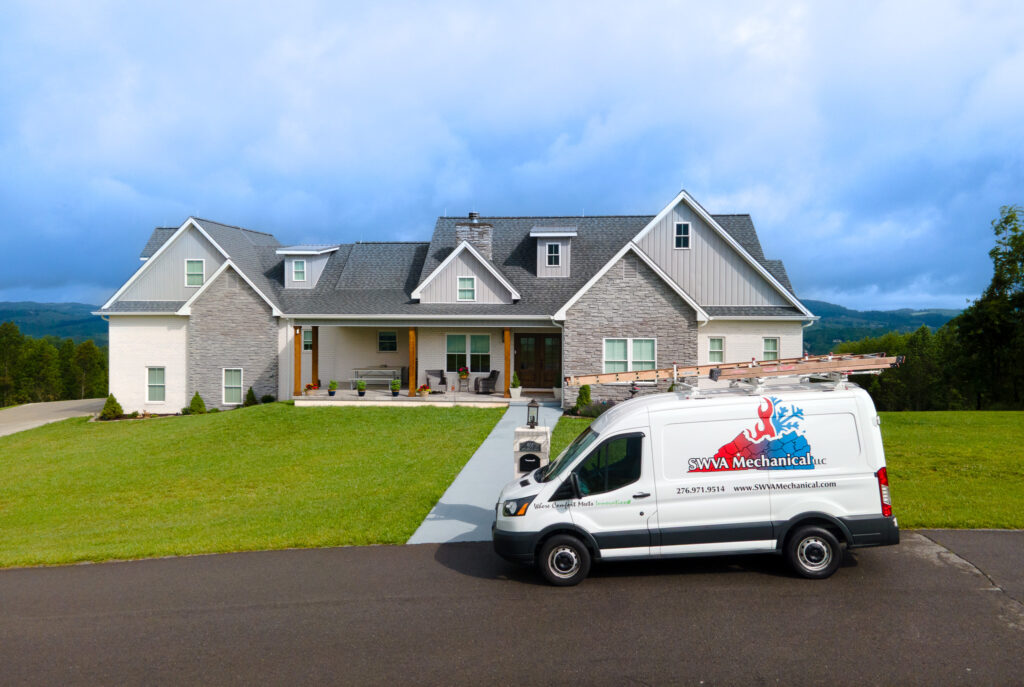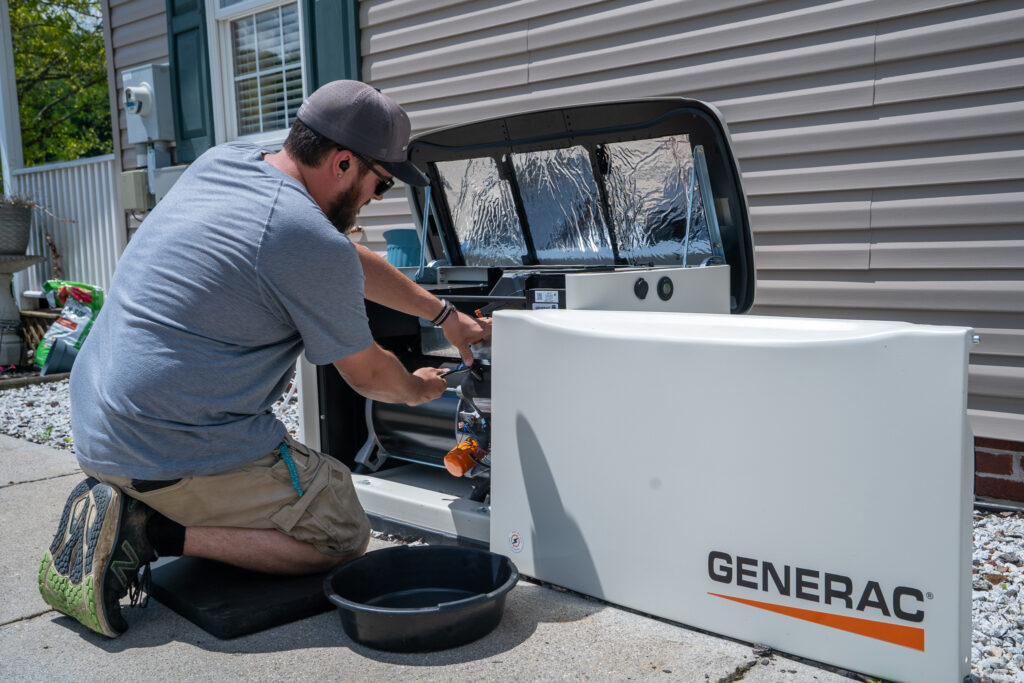A power outage in Southwest Virginia can range from a minor inconvenience to a major, multi-day disruption. Whether caused by a severe thunderstorm in the summer or a crippling ice storm that weighs down the trees and power lines in our mountainous terrain, the loss of electricity brings daily life to a halt. This reality has led many homeowners to invest in a whole-home standby generator, a powerful piece of equipment that provides security and peace of mind. As you begin to explore your options, you will be faced with the single most important question in the entire process: what size generator do you really need?
Choosing the correct generator size is the absolute foundation of a reliable and effective backup power system. It is a decision that requires a careful and professional assessment of your home’s electrical needs. Selecting a unit that is too small can lead to a system that fails when you need it most, while choosing one that is too large is an unnecessary and costly expense. Understanding the process of how a generator is properly sized is the key to making a confident investment that will protect your home and family for years to come.
Why Proper Sizing Is Non-Negotiable
The process of sizing a generator is not a matter of guesswork or simple estimation. It is a critical calculation that ensures the generator can safely and reliably handle the electrical load you intend to place upon it. The consequences of getting this calculation wrong can be significant, regardless of whether you go too small or too large.
A generator that is undersized for its intended load is a recipe for failure. When an outage occurs and the generator tries to power more appliances than it has the capacity for, it will become overloaded. The generator’s own circuit breaker will trip, shutting the system down to protect itself from damage. This leaves you in the dark, with a backup power system that has failed at the exact moment it was supposed to perform. In a worst-case scenario, this repeated overloading can cause damage to the generator’s sensitive internal components or even to the appliances in your home.

Conversely, while it may seem that buying an oversized generator is a safe bet, this approach has its own significant drawbacks. A substantially oversized generator will have a much higher upfront purchase and installation cost. It will also be less fuel-efficient, consuming more natural gas or propane to produce the same amount of power as a correctly sized unit, leading to higher operating costs during every outage. A generator is designed to run most efficiently when it is operating at a significant percentage of its total capacity. A large generator running a very small load is an inefficient and wasteful machine.
Click here to learn more about a new generator.
Defining Your Needs
The journey to determining the right size generator begins with a fundamental decision about your goals during a power outage. Do you want a “lifeboat” that will keep your home’s most critical systems running, or do you want a “business as usual” experience where your daily life is completely uninterrupted?
The first approach is to power only your home’s essential loads. This is a practical and budget-friendly strategy that provides a powerful safety net. In this scenario, a smaller generator is professionally wired to a sub-panel that contains only your most critical circuits. For a typical home in rural Virginia, this would include circuits for the refrigerator and freezer to protect your food, the furnace or heat pump to keep your heat running in the winter, and, crucially, a well pump and sump pump. Without power for your well, you have no running water. This ensures your home remains safe, warm, and functional, without the expense of a larger system.
The second approach is a true whole-home power solution. This provides the ultimate level of convenience and peace of mind. In this setup, a larger, more powerful generator is installed to handle the entire electrical load of your house. When the power goes out, every light, every outlet, and every appliance in your home will function exactly as it did before. You can cook meals, do laundry, watch television, and even run your central air conditioner. Life continues on without any compromises. This requires a larger initial investment but provides a completely seamless and stress-free experience during a prolonged outage.
Understanding Electrical Loads
To understand how a generator is sized, it is important to understand that there are two types of power that appliances draw. The first is running watts, which is the continuous amount of power an appliance needs to operate. A refrigerator, for example, might use 800 running watts. The second, and far more critical, number is the starting watts, also known as surge watts.

Appliances with electric motors, such as your refrigerator, your central air conditioner, a well pump, or a sump pump, require a huge, momentary surge of power for a few seconds just to get the motor spinning from a dead stop. This starting wattage can be three to four times higher than the appliance’s normal running wattage. That same refrigerator that runs on 800 watts might require 2,200 watts for the instant its compressor kicks on.
This is the most common and critical mistake that people make when trying to size a generator on their own. They simply add up the running watts of all their appliances and assume that is the total power they need. However, a generator must be sized to handle the absolute peak load it will experience at any given moment, and that peak is determined by the starting watts of your largest appliances. The generator must have enough surge capacity to handle this initial jolt of power without becoming overloaded.
The Professional Solution
The only way to guarantee that you are choosing the correct size generator for your home is to have a professional perform a detailed load calculation. This is a systematic, scientific process that removes all of the guesswork and ensures your backup power system will be 100% reliable.
The process of a load calculation, as performed by an expert from SWVA Mechanical, begins with a thorough consultation to understand your goals. We will walk through your home with you and create a detailed inventory of every single circuit and appliance you wish to power during an outage, whether you are choosing an essential-loads or a whole-home approach.
For each of these items, we will determine its specific running and starting wattage requirements. We will then use this data to perform a series of calculations. First, we will add up the total running watts of all the items to determine the continuous load. Then, we will identify the appliances with the highest starting watt requirements. The final and most important calculation determines the absolute peak surge wattage the generator will need to supply when your largest appliances are starting up. This precise number allows us to recommend a generator that has the exact capacity to handle your home’s unique electrical profile safely and efficiently.
Other Important Factors in Your Generator Project
While proper sizing is the most critical technical decision, a successful generator installation involves several other important considerations that a professional contractor will help you navigate.
The first of these is the fuel source. The vast majority of standby generators for homes in our area run on either natural gas or liquid propane (LP). If your home already has a natural gas line, this is often the most convenient and cost-effective option, as it provides a virtually unlimited fuel supply. If you do not have natural gas, a large propane tank will be installed on your property to fuel the generator.

The physical placement of the generator is also a decision that is governed by local codes and safety regulations. The generator must be installed outdoors on a stable, level pad, and it must be a specific minimum distance away from any windows, doors, vents, and your property lines to ensure that its exhaust is safely directed away from your home.
Finally, the automatic transfer switch (ATS) is the brain of the entire system. A professional will install the correct type of ATS for your needs, whether it is a smaller sub-panel for your essential loads or a whole-home service disconnect switch that manages your entire electrical panel. This is a complex electrical installation that must be performed by a qualified professional to be safe and reliable.
A whole-home standby generator is a powerful and valuable addition to your property. It is an investment in your family’s security, comfort, and self-reliance during the unpredictable weather events we experience here in Southwest Virginia. The success of that investment, however, depends entirely on making the right choices during the planning and installation phase, and the most important of these choices is the size of the unit.
The process of determining the right size is a science, not a guess. It requires a detailed and professional assessment of your home and your needs. If you are considering the peace of mind that a standby generator can provide, we encourage you to start the process the right way. Contact the expert team at SWVA Mechanical for a professional consultation and a detailed load calculation to ensure your Lebanon home is prepared and protected.
